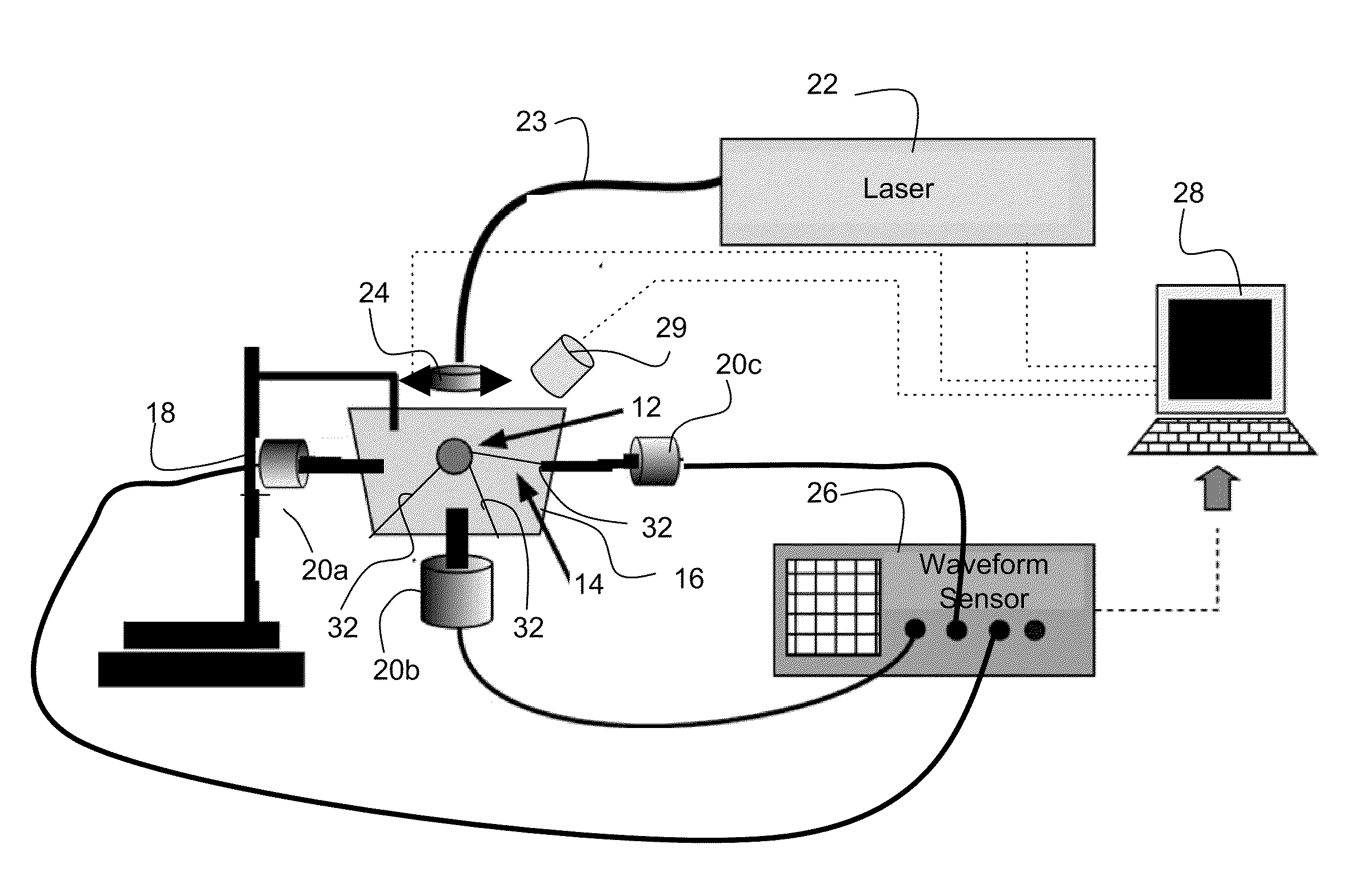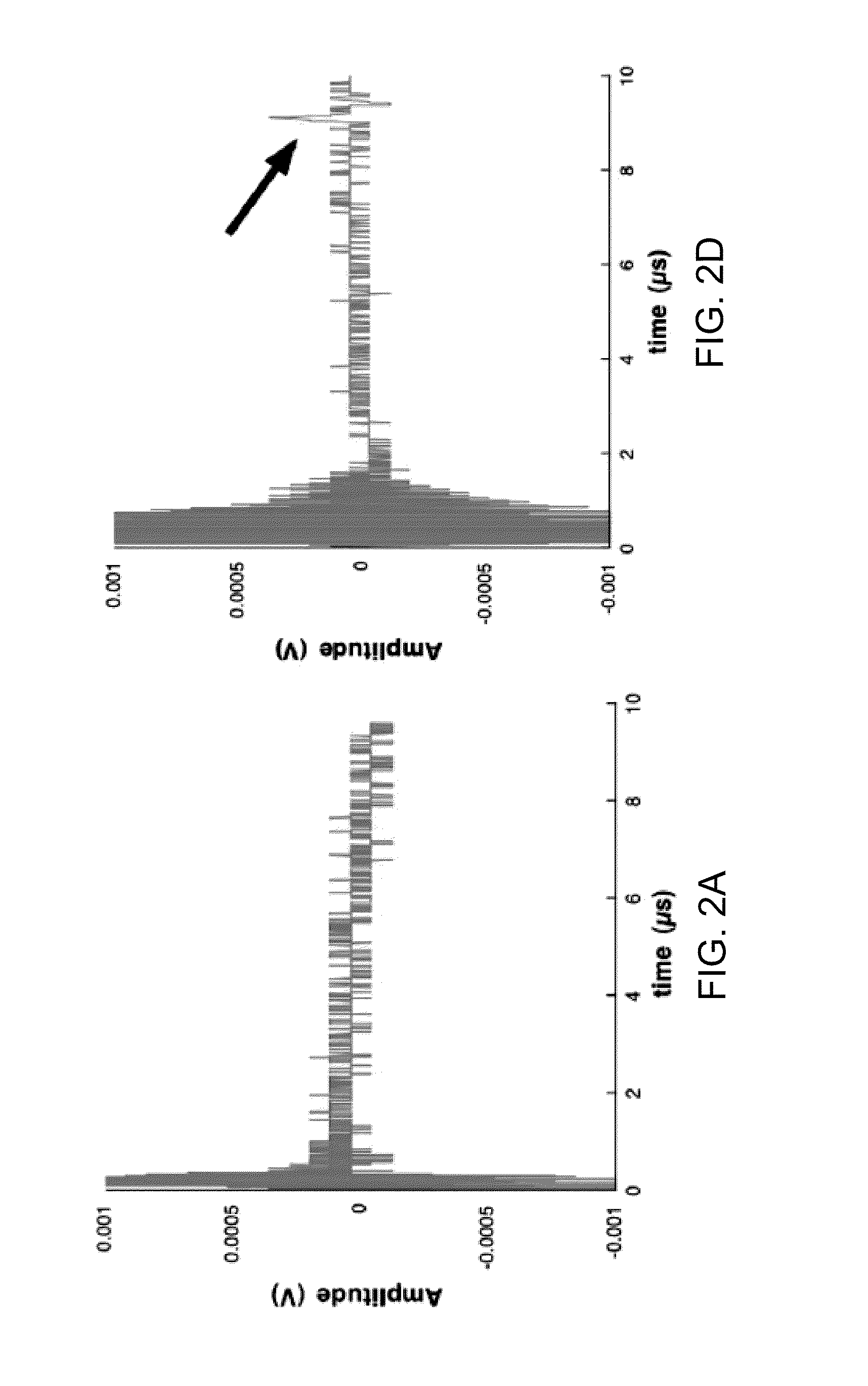Photoacoustic detection of analytes in solid tissue and detection system
a solid tissue and analyte technology, applied in the field of analyte detection in solid tissue and tissue analysis systems, can solve the problems of large increase in the number of sections, difficult to detect when a lymph node is sectioned, and inability to perform biopsy
- Summary
- Abstract
- Description
- Claims
- Application Information
AI Technical Summary
Problems solved by technology
Method used
Image
Examples
Embodiment Construction
[0012]The invention provides methods and systems for photoacoustic detection of analytes in extracted solid tissues, such as sentinel lymph nodes. Methods and systems of the invention are capable of detecting and geographically locating microscopic analytes in lymph nodes. Any analyte that is a light absorber can be detected in solid tissues, but methods and system of the invention are especially useful to detect the presence and position of micro-metastases in lymph nodes. Methods and systems of the invention can, for example, detect the presence or absence of and geographically locate in three dimensions the position of micro-metastases in extracted sentinel lymph nodes as replacement or aid to a traditional sentinel node biopsy.
[0013]A preferred system for detecting an analyte in solid tissue, such as an intact lymph node in vitro, includes a laser arranged to generate a pulsed laser beam into the solid tissue, which can be a fully intact lymph node. An acoustic sensor, and prefe...
PUM
 Login to View More
Login to View More Abstract
Description
Claims
Application Information
 Login to View More
Login to View More - R&D
- Intellectual Property
- Life Sciences
- Materials
- Tech Scout
- Unparalleled Data Quality
- Higher Quality Content
- 60% Fewer Hallucinations
Browse by: Latest US Patents, China's latest patents, Technical Efficacy Thesaurus, Application Domain, Technology Topic, Popular Technical Reports.
© 2025 PatSnap. All rights reserved.Legal|Privacy policy|Modern Slavery Act Transparency Statement|Sitemap|About US| Contact US: help@patsnap.com



